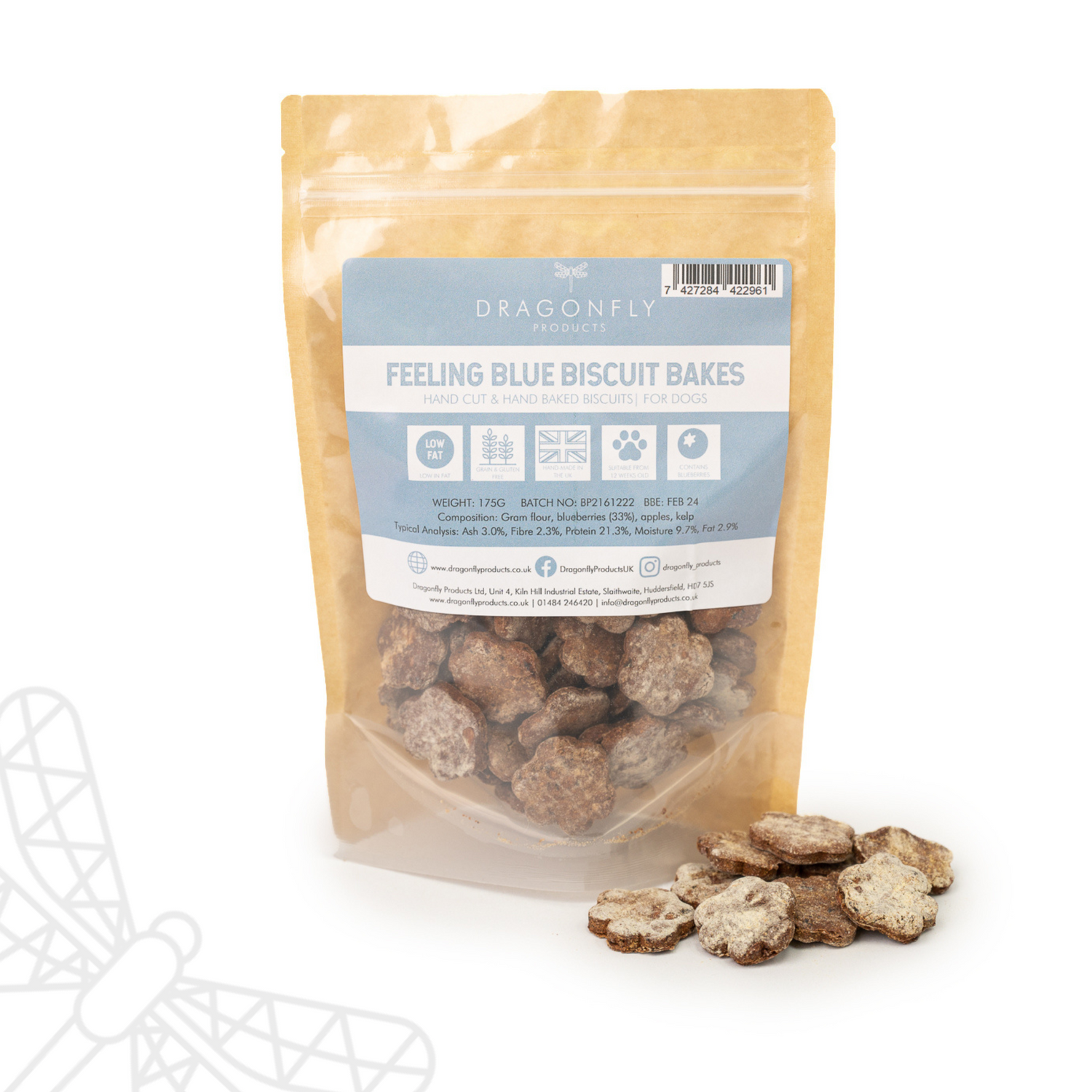
When is it too hot to walk my dog?
You might find yourself eagerly lacing up your trainers and reaching for your dog's lead to head out for a walk, but pause for a moment! Have you checked the temperature outside?
Walking your dog in hot weather isn't as straightforward as it seems. It's crucial to know when it's too hot for a safe stroll, as high temperatures can pose serious health problems to your dog.
Understanding the signs of when it's too hot can prevent discomfort or even life-threatening heatstroke in your dog. So we created this article so you can determine the best and safest times to walk your dog and avoid those scorching heat hazards.
Table of Contents
- What temperature is too hot to walk your dog?
- Can I walk my dog in the morning or evening during a heatwave?
- How do I keep my dog cool during a walk on a hot day?
- How do I prevent my dog from getting dehydrated in hot weather?
- What are the signs of heatstroke in dogs?
- What should I do if my dog shows signs of overheating or heatstroke?
- What time of day is safest to walk my dog in hot weather?
- How do I protect my dog's paws from hot pavement?
- What are some alternatives to walking my dog when it’s too hot?
What temperature is too hot to walk your dog?
When it's too hot for a walk, consider your dog's comfort and safety first. Generally, if the temperature exceeds 77 degrees Fahrenheit (25 degrees Celsius), it can become uncomfortable and potentially unsafe for your dog, especially if they are very young, old, or have a thick coat. Asphalt and pavement can be much hotter than the air temperature and can burn your dog's paws.
You can follow the guidelines below to help you determine the safest temperatures for walking your dog:
- 15°-17°C (60°-64°F): All dogs can safely be walked.
- 18°-20°C (65°-69°F): Generally safe for small to medium dogs, but some larger breeds might be at moderate risk.
- 21°-24°C (70°-75°F): Minimal risk for small to medium dogs; however, large breeds or dogs with health issues may face moderate risk.
- 24°-27°C (76°-80°F): Walking could be risky for all dogs, with larger dogs facing a moderate to high risk.
- 27°-29°C (81°-85°F): Extremely dangerous for all dogs – better to exercise extreme caution or avoid walking altogether.
- 30°-38°C (86°-100°F): It's excessively hot for walking any dog.
Moreover, to tell if it’s too hot to walk your dog, put the back of your hand on the pavement; if it's too hot for you to hold it there for at least five seconds, then it's too hot for your dog's paws.
Can I walk my dog in the morning or evening during a heatwave?
Walking your dog in the early morning or evening during a heatwave is a wise choice. These times of day are typically cooler and more comfortable for both you and your dog. The sun is less intense early in the morning or later in the evening, reducing the risk of overheating and burnt paws from hot pavement.
Still, it's essential to monitor the temperature and humidity levels, as they can remain high even during these times. If it's still very warm, consider even shorter walks or playing indoors instead.
How do I keep my dog cool during a walk on a hot day?
To keep your dog cool during a walk on a hot day, choose shaded paths and avoid direct sunlight as much as possible. As a rule of thumb, if the temperature or heat index is high, you shouldn’t walk them for more than 5 minutes. You can also invest in cooling gear, such as a cooling vest or a damp towel for your dog to wear.
Bring along plenty of fresh water and take more frequent breaks to allow your dog to drink and rest in the shade. If you observe your dog panting heavily or showing signs of discomfort, it's best to head home and cool down.
How do I prevent my dog from getting dehydrated in hot weather?
Preventing dehydration in your dog during hot weather is crucial. Always carry a portable water bottle or a collapsible bowl with fresh water on your walks, and encourage your dog to drink regularly during the walk.
At home, make sure your dog has constant access to clean water. Adding ice cubes to the bowl can also help keep the water cooler and more appealing. Be alert for signs of dehydration, like dry gums, excessive panting, and reduced energy levels, and respond by providing water and cooling down your dog immediately.
What are the signs of heatstroke in dogs?
When assessing if a dog might be experiencing heatstroke, it's important to be vigilant for a variety of symptoms, including:
- Heavy panting without physical exertion
- Breathing difficulties, which are more pronounced in breeds with flat faces
- Lethargy or fatigue
- Muscular stiffness or reluctance to move
- Excessive drooling
- Apparent confusion or disorientation
- Vomiting, which may include blood
- Diarrhea, potentially with blood
- Difficulty walking in a straight line
- Sudden collapse
- Gums that appear bright red, blue, or bruised
- Dry or sticky gums
What should I do if my dog shows signs of overheating or heatstroke?
If your dog starts showing signs of overheating or heatstroke, it's crucial to act quickly to prevent serious health issues. Here's what you need to do to help your dog cool down and recover safely.
- Bring your dog into the shade or an air-conditioned space.
- Prevent your dog from exerting any further energy.
- Apply cool water gently over your dog’s body, especially on the neck, underarms, and inner thighs.
- Give your dog small amounts of cool water to drink.
- Increase air circulation with fans if available, especially if the dog is wet.
- Do not drape wet towels over your dog, because this can trap heat and worsen the condition.
- If the water supply is limited, use a sponge or cloth soaked in cool water to dampen your dog. You can enhance the cooling effect by fanning air over the wet areas of their body.
- If possible, check your dog’s temperature; if it's above 40°C (104°F), continue cooling efforts.
- Get in touch with your veterinarian for advice and to alert them you are bringing in your dog for treatment.
- When transporting your dog to the vet, make sure the vehicle is cool. Use air conditioning to maintain a cool environment inside the car.
- Keep observing your dog’s condition closely for any changes or worsening of symptoms.
What time of day is safest to walk my dog in hot weather?
In hot weather, the safest times to walk your dog are early in the morning or later in the evening when temperatures are cooler.
During these periods, the sun is not as intense, which helps prevent overheating and makes the walk more comfortable for both you and your pet.
Try to avoid the midday heat, especially between 10 in the morning and 4 in the afternoon, when the sun’s rays are strongest and the risk of heatstroke increases.
How do I protect my dog's paws from hot pavement?
To protect your dog’s paws from hot pavement, consider using dog booties that provide a protective barrier against the scorching ground. If your dog isn’t comfortable wearing booties, you can apply paw balm to their pads before and after walks to help moisturise and protect them.
Always test the pavement temperature with your hand before heading out; if it’s too hot for your hand, it’s too hot for your dog’s paws. Opt for grassy or shaded paths as much as possible to avoid the hot pavement.

What are some alternatives to walking my dog when it’s too hot?
When it’s too hot for a traditional walk, there are several alternatives to ensure your dog still gets enough exercise. Improvise at home with a doggy paddling pool, frozen Lickimats with natural yogurt or peanut butter on them, play enrichment games using snuffle mats, cool mats, provide plenty of cool fresh water in a couple of bowls dotted around, set up a parasol in the garden for your dog to lay under, or put the sprinkler on for them to play in… the ideas are endless.
If you have access to a safe swimming area, swimming is excellent exercise and keeps your dog cool at the same time. You could also consider driving your dog to a dog-friendly, air-conditioned place, like some pet shops or indoor dog play centres (like ours!), where they can walk and explore without the risk of overheating.
For any further help and advice please contact us on 01484 246420 and why not join our social media channels and online community on Instagram, Facebook or YouTube.
With Wags and Woofs,
Laura, Dolly & Reggie




